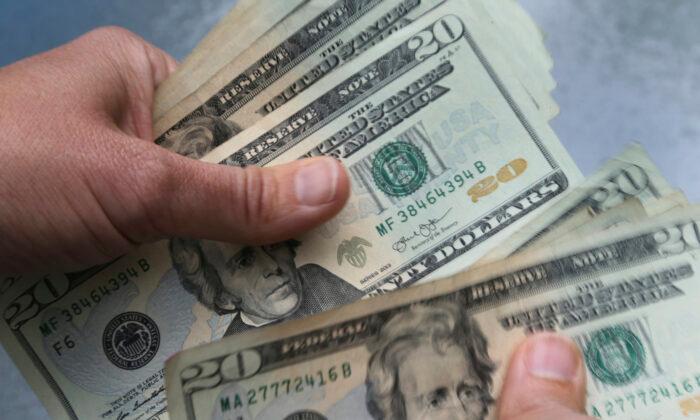The cost-of-living crisis has become entrenched in the U.S. economy, and an elevated Consumer Price Index (CPI) might linger longer than officials had anticipated. As a result, rampant inflation is altering the savings habits of Americans as they attempt to endure monthly price hikes at the supermarket or on their utility bills.
This represented the third time in four months that the number of Americans drawing from their savings more than usual exceeded the number of those who do so less than usual.
In addition, 24 percent of respondents say they are spending money more than usual, up from 19 percent. At the same time, 27 percent note that they are paying off their credit cards and loans less than usual, up from 23 percent.
Meanwhile, the economic sentiment among Americans was unchanged this month, hovering at levels seen throughout the summer. But consumer confidence is still lower than it was at the beginning of 2022.

Consumers Struggling From Inflation
Respondents’ answers were generally consistent with the downward trend of personal savings rates. Bureau of Economic Analysis (BEA) data show that the household savings rate in the United States fell to 5 percent in July, unchanged from June. Since peaking at 33 percent in early 2020, the personal savings rate has steadily declined.But many Americans might find it necessary to tap into their rainy-day funds or sock away less money for their retirement because inflation is eating into their salary and wages.
“Inflation that has run at the highest levels in more than four decades has stripped buying power away from households of all walks of life,” said Greg McBride, the chief financial analyst for Bankrate, in a statement. “Even half of those receiving a pay raise, getting a promotion, or taking on new responsibilities said that higher pay falls short of the increase in household expenses.”
“The cost-of-living increase continues to be the exception rather than the rule,” he added.
Overall, 62 percent of employees are stressed about their finances.
The wave of developments that have transpired over the last 18 months has resulted in more U.S. households living paycheck to paycheck.
But Anuj Nayar, LendingClub’s financial health officer, noticed an interesting trend forming in the U.S. marketplace. The research discovered that there is a considerable number of households that are living paycheck to paycheck but managing to keep up with their monthly obligations.
“More consumers living paycheck to paycheck indicates that many are continuing to lose their financial stability,” Nayar said in a statement. “Yet, the share of consumers living paycheck to paycheck with issues paying their bills has dropped seven percentage points in the past year. Many have moved to what now may constitute a stable lifestyle: living paycheck to paycheck, but still managing to pay your monthly bills. There is just nothing left over at the end.”





